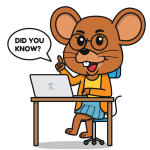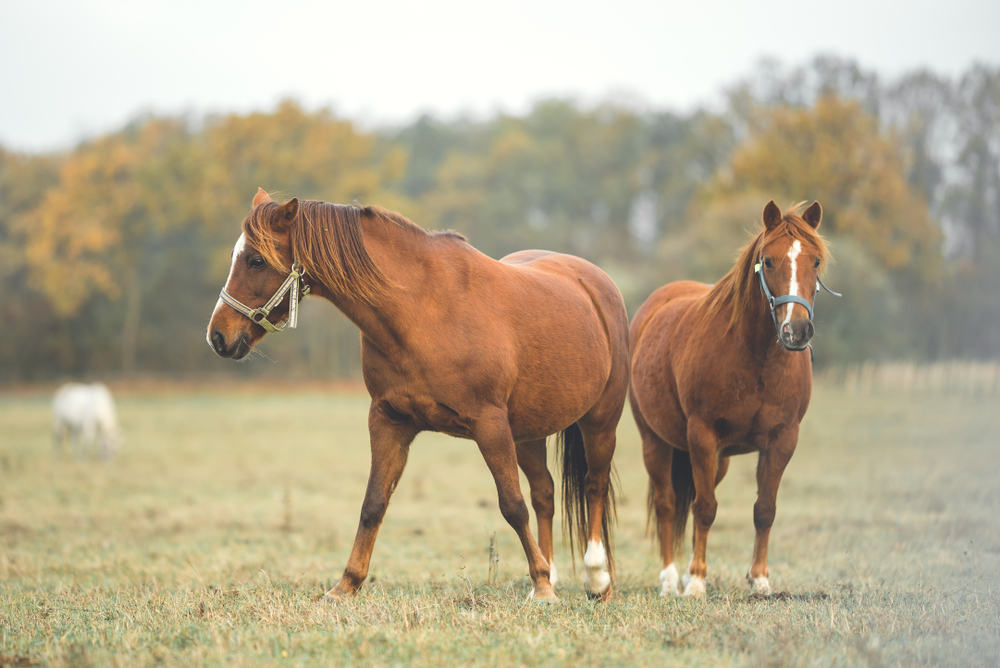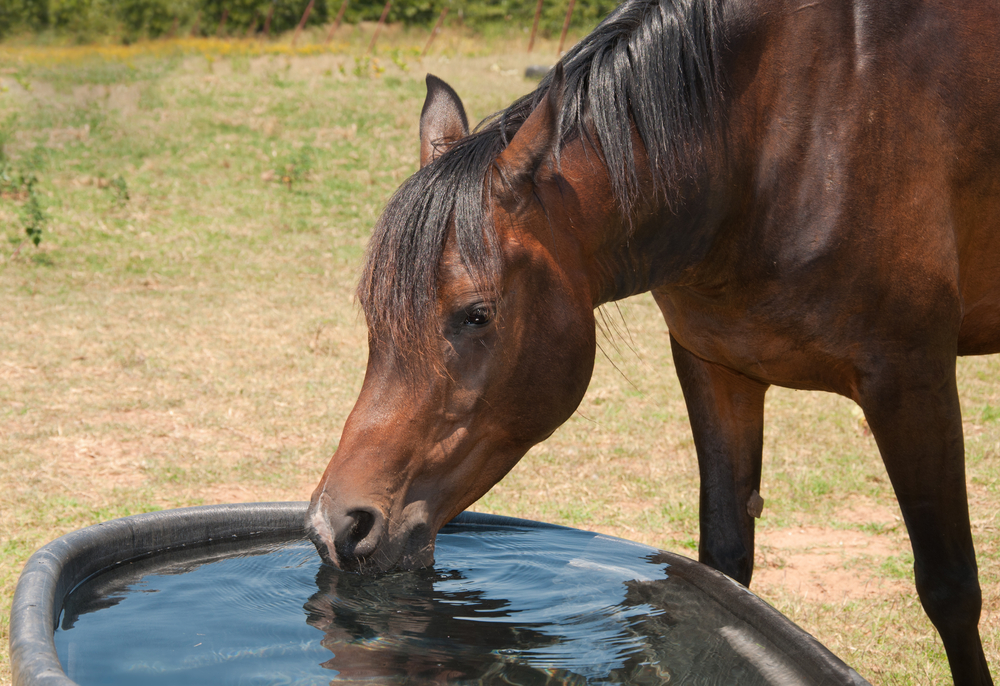Whinny’s Wisdoms

Hey everybody, Whinny here! As fall ushers in cooler temperatures and changing pastures, horse owners are met with the promise of crisp, cool air and the joys of fall riding. But as the seasons change, so too should your horse’s diet. Fall is a critical time to ensure your equine companion’s management is optimized for health. Remember, proper nutrition has almost nothing to do with supplements and almost everything to do with the diet we feed—including pasture. Diet is also what most impacts the pillars on which horse health stands: their hooves!
Being a resident of Springhill Equine’s pastures, I can tell you that Florida foliage does not change as much as it would up north (I have cousins living in a barn in Wisconsin). Things stay mostly green here and we don’t often have to worry about frost or *shudder* snow. But, this mouse knows the only constant in life is change, so here are some tips and tricks to managing that change for your horses (with a bonus snack idea at the end!)
Pasture Upkeep
As fall approaches, the quality of your horse’s pasture may change. Grasses tend to mature, becoming less lush and lower in nutritional value. It’s essential to regularly assess the state of your pasture to ensure it can still provide adequate nutrition for your horses. Implementing pasture rotation is an excellent strategy to manage fall grazing. By dividing your total pasture into large sections and rotating your horses between them, you allow the grass in one area to recover while your horses graze in another. This practice helps maintain better pasture quality throughout the season.
If you have other animals such as cattle or goats, you can rotate them through after the horses to help clean up parasites. In cases where your pasture quality decreases significantly, or if you have limited access to pasture, you may need to supplement your horse’s diet with additional forage. High-quality hay is an excellent option and provides the necessary fiber, vitamins, and minerals your horse needs.

Calorie Management
It’s always essential to monitor your horse’s weight and adjust their diet accordingly. Consult with your veterinarian or equine nutritionist to determine if additional forage or dietary changes are needed. Check the back of the bag of any of your horse feeds for contact information for their nutrition consultants. These awesome humans are a drastically underutilized resource! For some of our beloved ponies that get fat on air, fall can be a time of relaxation for owners as their little gremlins can’t get quite as many calories. But, for the senior thoroughbred, fall may mean an increase in hay or concentrated feeds to keep those ribs covered!
Hydration
As temperatures drop, horses may drink less water. Ensure they have access to clean, fresh water at all times to prevent dehydration. Consider adding a heated water source to prevent water from freezing in colder regions. We all love our fall beverages (PSL anyone?), why don’t you try adding a bit of grain or molasses to one of your horses’ water buckets to encourage them to drink? Some creative humans even offer “water buffets” to their horses—different buckets with different mix-ins: plain, grain, molasses, apple juice, carrot juice, salt, Gatorade, etc. I notice I haven’t been offered a fondue buffet yet…

Whinny’s Wisdom: Moderation in all things! ANY change to your horse’s diet or management should be made gradually.
Proper pasture management and hydration are crucial components of fall horse care. By monitoring your pasture, adjusting your horse’s diet as needed, and ensuring they have consistent access to clean, unfrozen water, you can help your equine companions stay healthy and comfortable throughout the autumn season. Regular communication with your veterinarian can provide further guidance tailored to your horse’s specific needs.
Alright, now that we’ve gotten the blog done, here’s the bonus content I promised–surprise, it’s a recipe blog! You can call me Chef Whinny, now!
Here’s a simple recipe for homemade pumpkin horse treats:
Pumpkin Horse Treats
Ingredients:
– 2 cups of rolled oats
– 1 cup of canned pumpkin puree (make sure it’s pure pumpkin without added sugar or spices)
– 1/4 cup of unsweetened applesauce
– 1/4 cup of molasses
– 1 teaspoon of ground cinnamon
– 1/2 teaspoon of ground nutmeg
– 1/2 teaspoon of ground ginger
– 1/2 teaspoon of salt
Instructions:
- Preheat the Oven: Preheat your oven to 350°F (175°C). Line a baking sheet with parchment paper or a silicone baking mat.
- Mix Dry Ingredients: In a large mixing bowl, combine the rolled oats, ground cinnamon, ground nutmeg, ground ginger, and salt. Mix them well to distribute the spices evenly throughout the oats.
- Add Wet Ingredients: Add the canned pumpkin puree, unsweetened applesauce, and molasses to the dry ingredients. Mix everything together until you have a sticky dough-like consistency. You can use a wooden spoon or your hands to do this.
- Shape the Treats: Take small portions of the dough and roll them into bite-sized balls or shape them into fun cookie-cutter shapes using horse-themed cookie cutters if you have them. Place the treats on the prepared baking sheet, leaving some space between each.
- Bake: Bake the treats in the preheated oven for about 15-20 minutes or until they are firm and slightly browned on the edges. Keep an eye on them to prevent overcooking.
- Cool: Once baked, remove the treats from the oven and let them cool completely on a wire rack. They will firm up as they cool.
- Store: Store the pumpkin horse treats in an airtight container. They can be kept at room temperature for a few days or in the refrigerator for longer shelf life.
These homemade pumpkin horse treats are a delicious and nutritious way to spoil your equine friend during the fall season. Remember to feed them in moderation, as treats should be a supplement to your horse’s regular diet. Enjoy making and sharing these tasty treats with your horse, and make sure to leave some nice crumbles for your friendly clinic mouse!
Until next week,
~Whinny
P.S. Did you know the humans here at Springhill Equine have the biggest, most popular equine veterinary podcast in the world? It’s called Straight from the Horse Doctor’s Mouth. Each episode (and there are over 130 and counting) covers a horse-health topic and is directed at horse owners so they can learn how to take the best care of their horses. You can check it out right over on the Podcast Page of my website, or subscribe on Spotify, Apple Podcasts, or wherever you get your podcasts.
 Whinny’s Wisdoms is the official blog of Whinny the Clinic Mouse at Springhill Equine Veterinary Clinic in Newberry, Florida. If you liked this blog, please subscribe below, and share it with your friends on social media! For more information, please call us at (352) 472-1620, visit our website at SpringhillEquine.com, or follow us on Facebook!
Whinny’s Wisdoms is the official blog of Whinny the Clinic Mouse at Springhill Equine Veterinary Clinic in Newberry, Florida. If you liked this blog, please subscribe below, and share it with your friends on social media! For more information, please call us at (352) 472-1620, visit our website at SpringhillEquine.com, or follow us on Facebook!
[jetpack_subscription_form title="Subscribe to Whinny's Wisdoms"]

